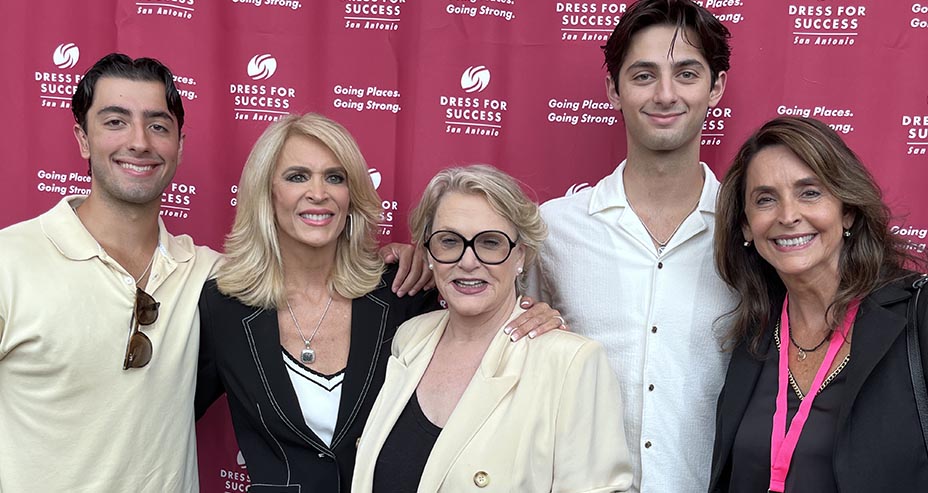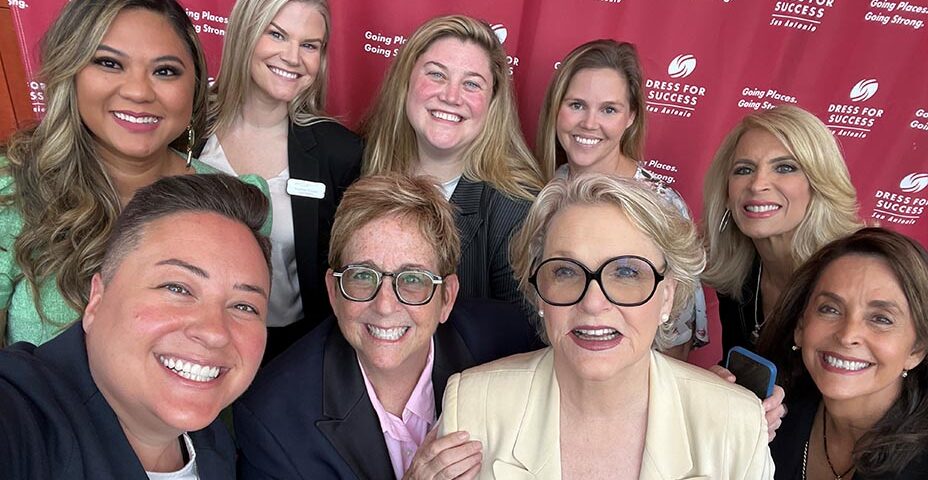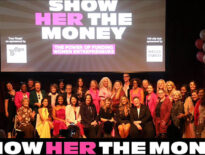
The venture capital (VC) industry has long been dominated by men, a trend that reflects broader gender disparities in finance and investment. Despite the growing number of women entrepreneurs and leaders in business, the gender gap in venture capital investment remains significant. This discrepancy raises important questions about the underlying factors contributing to the disparity and what can be done to create a more inclusive and balanced VC landscape.
This is why I created the movie “Show Her the Money”- so that women could learn in an engaging storytelling way- how exciting and fascinating venture capital investing can be, while educating them about how lucrative it can be (the most money is made before the company hits the public market!) Plus- how their VC investments will impact deciding what products and services we will see in the future - regarding Women’s health care, the environment, and more!
The important thing for men to realize is that funding women impacts everyone - as their ideas and invocations will impact them too! For instance- it may be a woman who comes up with a cure for prostate cancer! Just to give an example.
Also, as I mentioned in my Ted Talk: “Fund Women- Save The World", research shows that people tend to invest in people they identify with. So, if no women are sitting at the decision-making table- deciding who gets funding- that is one reason women entrepreneurs are getting only 2% of venture capital funding and men get 98%. Thus, why women need to become venture capital investors and decide who gets the funding for their ideas and innovations that will impact the future!
How do they learn how to begin? They can start by seeing our movie “Show Her the Money”- and by visiting our resources page.
Structural barriers, such as the lack of access to influential networks and limited mentorship opportunities, have also played a role in maintaining this imbalance. Women, particularly in earlier stages of their careers, often face challenges in breaking into the male-dominated VC circles. This lack of representation can perpetuate a cycle where fewer women are in positions to make investment decisions or influence the allocation of capital.
The good news is- more women than ever in history are starting venture funds. Most of these funds are focused on investing in women, BIPOC and LGBTQ - all the overlooked communities in the venture world. And with women coming into trillions of dollars in the coming decade- now is the time for women to get into the powerful world of venture capital impact investments.
However, it's important to recognize that women’s more cautious approach to investment is not a disadvantage. In fact, it can be a strength. Women investors often prioritize due diligence and long-term sustainability, which can lead to more thoughtful and successful investment strategies. Encouraging a diversity of investment styles and risk appetites in venture capital could contribute to a more balanced and resilient industry.
In recent years, there has been a growing movement to increase the visibility of successful women in venture capital. Organizations and initiatives dedicated to supporting women in finance and investment are emerging, providing mentorship, resources, and networking opportunities. By highlighting the achievements of women in VC and creating supportive communities, these efforts are helping to pave the way for greater gender equity in the industry.
Moreover, research has shown that companies with diverse leadership teams tend to perform better financially. By investing in women-led startups and fostering diverse investment teams, the venture capital industry can unlock new opportunities for growth and innovation.
The gender gap in venture capital is a complex issue with deep-rooted causes, but it is not insurmountable. By addressing structural barriers, promoting diverse teams, and encouraging more women to learn about and invest in this alternative asset class- we can overcome this inequity in the venture universe.
Catherine Gray
CEO SHe Angel Investors
Author | TEDx Speaker
Podcast Host, Invest In Her
Producer, Show Her the Money Movie
Watch my Ted talk here!
https://youtu.be/Ms-tROEeLn4
This is why I created the movie “Show Her the Money”- so that women could learn in an engaging storytelling way- how exciting and fascinating venture capital investing can be, while educating them about how lucrative it can be (the most money is made before the company hits the public market!) Plus- how their VC investments will impact deciding what products and services we will see in the future - regarding Women’s health care, the environment, and more!
The important thing for men to realize is that funding women impacts everyone - as their ideas and invocations will impact them too! For instance- it may be a woman who comes up with a cure for prostate cancer! Just to give an example.
Historical Context and Structural Barriers
The roots of the gender gap in venture capital can be traced back to the historical exclusion of women from financial and business networks. For decades, the finance industry, including venture capital, was primarily male-dominated. Men held the majority of leadership roles, built extensive networks, and controlled significant financial resources. As a result, the industry developed structures and norms that favored men, often leaving women on the periphery.Also, as I mentioned in my Ted Talk: “Fund Women- Save The World", research shows that people tend to invest in people they identify with. So, if no women are sitting at the decision-making table- deciding who gets funding- that is one reason women entrepreneurs are getting only 2% of venture capital funding and men get 98%. Thus, why women need to become venture capital investors and decide who gets the funding for their ideas and innovations that will impact the future!
How do they learn how to begin? They can start by seeing our movie “Show Her the Money”- and by visiting our resources page.
Structural barriers, such as the lack of access to influential networks and limited mentorship opportunities, have also played a role in maintaining this imbalance. Women, particularly in earlier stages of their careers, often face challenges in breaking into the male-dominated VC circles. This lack of representation can perpetuate a cycle where fewer women are in positions to make investment decisions or influence the allocation of capital.
The good news is- more women than ever in history are starting venture funds. Most of these funds are focused on investing in women, BIPOC and LGBTQ - all the overlooked communities in the venture world. And with women coming into trillions of dollars in the coming decade- now is the time for women to get into the powerful world of venture capital impact investments.
Risk Perception and Investment Behavior
Another factor contributing to the gender disparity in venture capital investment is the difference in risk perception and investment behavior between men and women. Studies have shown that men are generally more likely to take financial risks than women. This tendency can lead to a higher representation of men in venture capital, where risk-taking is a fundamental aspect of the industry.However, it's important to recognize that women’s more cautious approach to investment is not a disadvantage. In fact, it can be a strength. Women investors often prioritize due diligence and long-term sustainability, which can lead to more thoughtful and successful investment strategies. Encouraging a diversity of investment styles and risk appetites in venture capital could contribute to a more balanced and resilient industry.
Representation and Role Models
The lack of visible role models for women in venture capital also plays a significant role in the gender gap. When women do not see others like themselves in leadership or investment roles, it can be challenging to envision a path forward in the industry. This absence of representation can discourage women from pursuing careers in venture capital or from becoming investors themselves.In recent years, there has been a growing movement to increase the visibility of successful women in venture capital. Organizations and initiatives dedicated to supporting women in finance and investment are emerging, providing mentorship, resources, and networking opportunities. By highlighting the achievements of women in VC and creating supportive communities, these efforts are helping to pave the way for greater gender equity in the industry.
The Importance of Diversity in Venture Capital
The gender gap in venture capital is not just a matter of equity; it has significant implications for the industry and the broader economy. Diverse investment teams are more likely to identify and support a wider range of innovative ideas and businesses. When women are underrepresented in venture capital, there is a risk that the unique perspectives and insights they bring to the table are overlooked.Moreover, research has shown that companies with diverse leadership teams tend to perform better financially. By investing in women-led startups and fostering diverse investment teams, the venture capital industry can unlock new opportunities for growth and innovation.
Closing the Gender Gap: Steps Forward
Addressing the gender disparity in venture capital requires a multifaceted approach. Here are some steps that can help close the gap:- Promote Education and Awareness: Increasing awareness of the gender gap in venture capital is the first step toward change. Educational programs, workshops, and conferences can highlight the importance of diversity in investment and encourage more women to enter the field.
Our film - Show Her the Money -is creating a college curriculum to get young women thinking about venture capital as a career path, as an investment opportunity, and as a way of funding their ideas and innovations - Expand Networks and Mentorship: Creating and expanding networks for women in venture capital is crucial. Mentorship programs that connect aspiring women investors with experienced professionals can provide the guidance and support needed to navigate the industry.
- Support Women-Led Funds: Investing in or creating women-led venture capital funds can help shift the balance. These funds can focus on supporting diverse founders and fostering inclusive investment practices.
- Encourage Institutional Change: Venture capital firms should actively work to diversify their teams and create inclusive environments. This includes implementing policies that promote gender equity and holding leadership accountable for progress.
- Highlight Success Stories: Celebrating and amplifying the success stories of women in venture capital can inspire the next generation of female investors. By showcasing role models, the industry can help break down barriers and encourage more women to participate in venture capital.
The gender gap in venture capital is a complex issue with deep-rooted causes, but it is not insurmountable. By addressing structural barriers, promoting diverse teams, and encouraging more women to learn about and invest in this alternative asset class- we can overcome this inequity in the venture universe.
Catherine Gray
CEO SHe Angel Investors
Author | TEDx Speaker
Podcast Host, Invest In Her
Producer, Show Her the Money Movie
Watch my Ted talk here!
https://youtu.be/Ms-tROEeLn4



